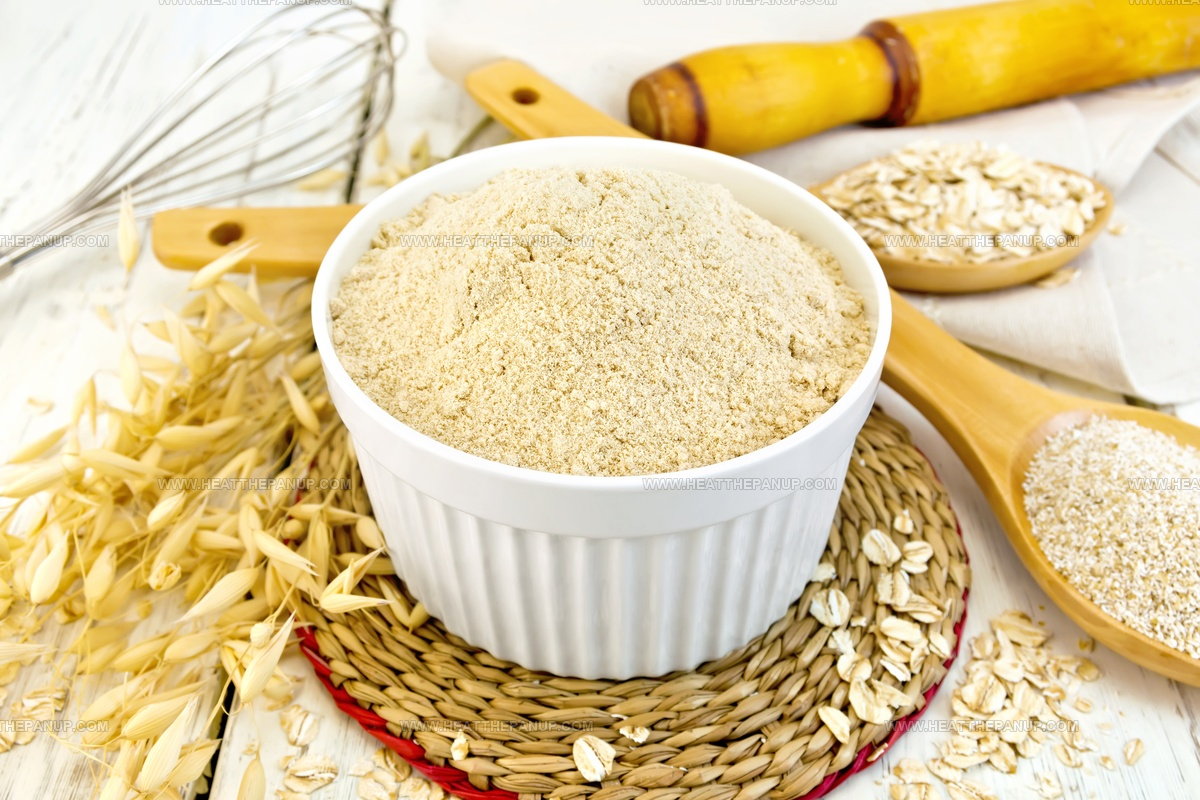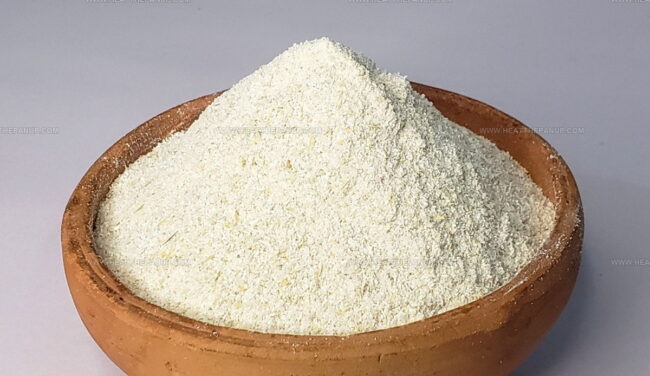3 How to Use Oat Flour Instead of All-Purpose
Substitute oat flour for all-purpose flour whenever healthier baking alternatives become necessary in various recipes.
This nutritious swap brings a slightly sweet, nutty flavor that enhances many baked goods while adding extra fiber to everyday treats.
Many home bakers appreciate how this gluten-free option creates wonderfully moist textures in cakes, cookies, and quick breads despite some minor adjustments needed for best results.
The natural composition of oat flour affects moisture retention differently than traditional wheat flour, giving foods a distinctive quality that some people actually prefer.
Professional chefs have increasingly embraced this ingredient as consumer demand for wholesome alternatives continues growing steadily across food markets worldwide.
After learning about proper ratios and techniques, you can transform favorite recipes into more nutritious versions without sacrificing taste or texture – all those delicious details await just below.
Reasons to Substitute Oat Flour
There are several good reasons to swap out oat flour in your recipes, whether you're baking, cooking, or just experimenting with new ingredients in your kitchen:
Gluten-Free Needs
Oats are naturally gluten-free but may be processed near gluten grains. Use almond, coconut, or certified gluten-free flours for safety with gluten sensitivity.
Texture Preferences
Oat flour gives dense, chewy baked goods; for lighter, fluffier results, try rice flour, almond flour, or gluten-free blends.
Flavor Variety
Oat flour has a nutty, slightly sweet taste; swapping with coconut, buckwheat, or almond flour adds new flavors and variety.
Nutritional Needs
Some substitutes boost nutrition or reduce carbs, almond flour adds healthy fats/protein, coconut flour offers fiber and fewer carbs for dietary goals.
Availability and Cost
Oat flour can be hard to find or pricey; using pantry staples or easier-to-find flours saves money and hassle.
Baking Performance
Oat flour absorbs liquids differently; choosing flours with similar absorption or adjusting liquids improves baking success.
Allergy or Sensitivity
Some are sensitive to oats or oat products; using rice, tapioca, or chickpea flour avoids allergic or digestive issues.
Everyday Uses for All-Purpose Flour
All-purpose flour running out might seem like a big problem, but a handy replacement can get you through. Mixing, shaping, and baking all stay on track until the very end.
Baking
Oat flour shines as a versatile substitute in baking, creating fluffier, chewier, and more flavorful treats like banana bread, pancakes, and cookies.
Many home bakers appreciate how this alternative flour enhances the texture of their favorite recipes without compromising taste.
The main challenge when replacing all-purpose flour comes from oat flour's lack of gluten, requiring additional binding ingredients such as eggs, flax, arrowroot powder, or applesauce to hold everything together.
Recipes that rely heavily on yeast, such as traditional bread or cinnamon rolls, generally don't work well with oat flour since gluten is needed for proper rising.
Soups And Sauces
Oat flour serves as an excellent substitute for all-purpose flour in soups, sauces, and gravies, creating a rich and creamy texture that elevates any dish.
The secret behind this silky consistency lies in the beta-glucan fiber naturally present in oats, which transforms even low-fat milk gravies into decadent culinary experiences.
Beyond its impressive thickening capabilities, this versatile ingredient offers significant health advantages for many people.
These benefits include potential cholesterol reduction and relief for various skin conditions such as eczema, wounds, and radiation burns.
Fried Foods
Coating cooked fresh foods in flour before frying creates a crisp, golden crust that locks in moisture and enhances flavor.
Many chefs recommend using all-purpose flour for its consistent results, though alternative options like oat flour can add unique texture and nutritional benefits.
The classic three-step process involves dredging food in flour, dipping it in beaten eggs, then coating it again before it hits the hot oil.
Various seasonings such as salt, garlic powder, or paprika can be mixed directly into the flour for an extra flavor boost.
This simple technique works wonderfully for chicken, fish, vegetables, and even some fruits, making ordinary ingredients extraordinary with minimal effort.
Common Baking Issues When Swapping Oat Flour
Swapping oat flour in your baking can lead to a few common issues, but with a little awareness and simple adjustments, you can easily overcome them for tasty, successful results every time:
Oat Flour Substitutes: Common Baking Questions
1. Are there gluten-free alternatives to oat flour?
Yes, almond flour, coconut flour, rice flour, or gluten-free all-purpose flour blends are all naturally gluten-free alternatives.
2. Can I use regular all-purpose flour instead of oat flour?
Yes, use slightly less all-purpose flour than oat flour, as regular flour is more compact and absorbs liquids differently.
3. How do I substitute coconut flour for oat flour?
Use significantly less coconut flour (about ¼ the amount) and add extra liquid, since coconut flour absorbs much more moisture.
4. Will substituting oat flour affect baking times?
Not significantly, but keep an eye on your baked goods, they might bake slightly faster or slower depending on the substitute.
5. Can I use ground oats as a homemade oat flour substitute?
Yes, you can easily grind rolled oats in a blender or food processor into a fine flour as a direct homemade substitute.
6. Are oat flour substitutes suitable for vegan baking?
Absolutely, all suggested alternatives work well in vegan baking recipes, just ensure other ingredients are plant-based.
7. How should I store oat flour substitutes?
Store alternative flours in airtight containers in a cool, dry place, or refrigerate almond and coconut flours for longer freshness.



Angelina Wiles
Content Editor & Culinary Enthusiast
Expertise
Food Writing and Editing, Vegetarian and Vegan Cuisine, Baking and Pastry Arts, Sustainable Cooking Practices
Education
Portland Community College
Certificate in Culinary Arts
Focus: Emphasis on sustainable cooking practices, vegetarian cuisine, and food writing.
Oregon Culinary Institute
Diploma in Baking and Pastry Arts
Focus: Specialized training in artisanal baking, pastry techniques, and dessert presentation.
Angelina’s love for cooking started with handwritten family recipes and weekend trips to farmers’ markets around Portland. She followed her passion with a Certificate in Culinary Arts from Portland Community College, then perfected her sweet side with a Diploma in Baking and Pastry Arts at Oregon Culinary Institute.
Angelina believes recipes should feel like a conversation, not a science project. She’s all about helping readers trust themselves in the kitchen with simple steps, fresh ideas, and easy twists on classic meals.
When she’s not editing recipes, she’s baking bread, sipping coffee, or getting inspired by the changing seasons.